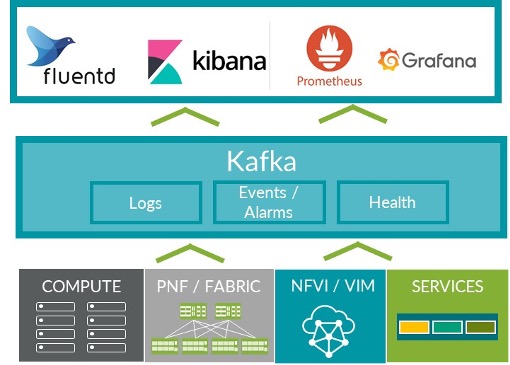Chess is the perfect metaphor for operators building a multivendor telco cloud. They both take vision, skill and a strategy that is many moves ahead of the competition.
 Like a multivendor telco cloud, chess is difficult to master because it has so many variables that create nearly an infinite number of moves and outcomes (10120). Unlike checkers where game pieces are uniform and move diagonally, chess has six different types of game pieces, each with unique and situational movements representing the roles and capabilities of each vendor within a multivendor environment. As a chess player, operators must start with a vision and execute a strategy, carefully coordinating the capabilities of each vendor. Failure to define a vision and supporting strategy will certainly result in check mate.
Like a multivendor telco cloud, chess is difficult to master because it has so many variables that create nearly an infinite number of moves and outcomes (10120). Unlike checkers where game pieces are uniform and move diagonally, chess has six different types of game pieces, each with unique and situational movements representing the roles and capabilities of each vendor within a multivendor environment. As a chess player, operators must start with a vision and execute a strategy, carefully coordinating the capabilities of each vendor. Failure to define a vision and supporting strategy will certainly result in check mate.
Multi-Vendor Versus Multivendor
To be clear, multivendor is not the same as deploying products from many different manufacturers. In this ‘multi-vendor’ case, vendor products are highly independent of one another with little collaboration and an integration effort that is left in the hands of the operator. At best, this is just a narrow procurement exercise in search of saving a few bucks in the short term. Multivendor, in the telco cloud sense, requires considerable partner collaboration with an iterative integration process built upon agile and DevOps methodologies so that course corrections are dynamic and timely while keeping the strategy in scope. When deployed correctly, multivendor solutions foster improved operator-to-partner collaboration and success while giving operators the flexibility and freedom to optimize the telco cloud platform under their control.
Juniper Networks has decades of experience working with network operators to define and implement multivendor solutions and we have leveraged both our service provider and cloud expertise to realize the same success for telco cloud. In September, Deutsche Telekom, a Juniper customer, announced the successful deployment of a fully automated, modern, multivendor telco cloud for their Next Generation IMS voice service (NIMS). As Chess Grandmaster, DT developed a strategic vision of a universal telco cloud architecture, selecting Juniper as the technology lead to deliver the high-performance underlay and Contrail SDN overlay. Like chess game pieces, DT selected six NIMS vendors, including Juniper, Red Hat, HPE, Lenovo, Metaswitch and Mavenir to fortify the ecosystem and appointed Juniper as Prime Integrator to manage the integration of the solutions into a production, multivendor telco cloud.
Failure to Plan is Planning to Fail
Our experience in working with DT and other operators has shown that an execution strategy is critical to harmonize multivendor platforms and avoid vendor-locked silos. A case in point is analytics, which is critical to the efficacy of an AI-driven automation framework.  Most vendor hardware and software push specialized telemetry data to vendor-specific and proprietary element management systems. This model eliminates operator flexibility and choice by cementing the vendors’ products into the cloud platform requiring significant retooling and long qualification cycles to make vendor or platform changes. By starting with a vision of the end game, design of the telco cloud can be open and versatile, standardizing telemetry information, formats, protocols and key performance indicators (KPIs) to eliminate proprietary management systems that create vendor lock-in. Services or functional blocks from one vendor that fall below targeted performance or quality thresholds can be quickly and seamlessly replaced by another. Using open source software like Kafka, telemetry data can be pooled into a common data lake for use by multiple analytics applications to realize a Self-Driving Network™ that is multivendor, flexible and performant.
Most vendor hardware and software push specialized telemetry data to vendor-specific and proprietary element management systems. This model eliminates operator flexibility and choice by cementing the vendors’ products into the cloud platform requiring significant retooling and long qualification cycles to make vendor or platform changes. By starting with a vision of the end game, design of the telco cloud can be open and versatile, standardizing telemetry information, formats, protocols and key performance indicators (KPIs) to eliminate proprietary management systems that create vendor lock-in. Services or functional blocks from one vendor that fall below targeted performance or quality thresholds can be quickly and seamlessly replaced by another. Using open source software like Kafka, telemetry data can be pooled into a common data lake for use by multiple analytics applications to realize a Self-Driving Network™ that is multivendor, flexible and performant.
Juniper has managed the implementation of multivendor telco clouds to deliver true cloud outcomes like flexibility, agility and speed with an open architecture to eliminate vendor lock-in. We are committed to helping our customers realize cloud economics through technology and business transformation that is based on industry standards and open source solutions that encourage collaborative, multivendor solutions. Our top-down, cloud-first strategic approach helps network operators achieve their vision and command the chess board in the ‘Cloud + 5G + AI’ era.
To learn more about Juniper’s telco cloud solutions, visit our telco and edge cloud solution page or telco transformation page.

























